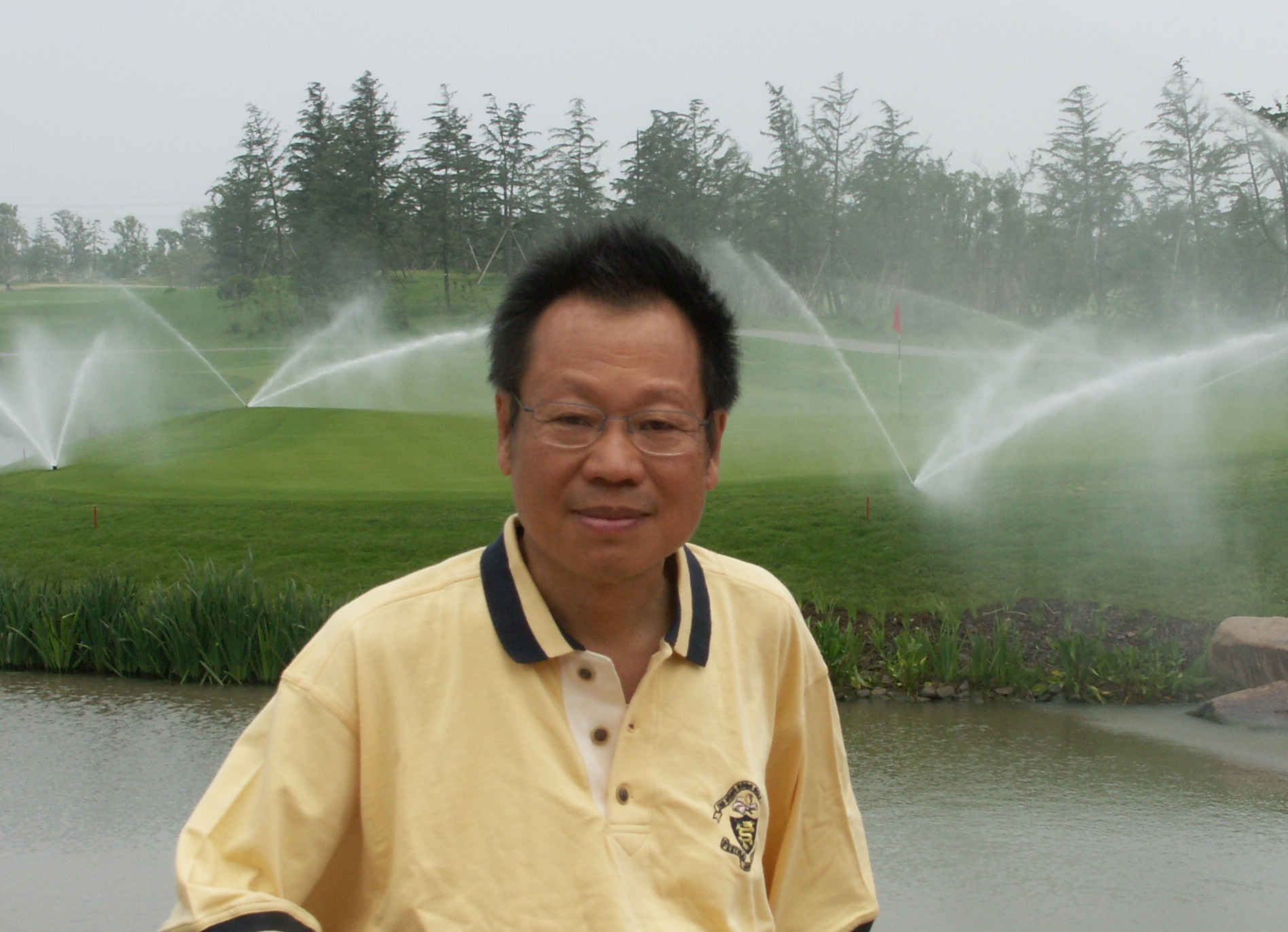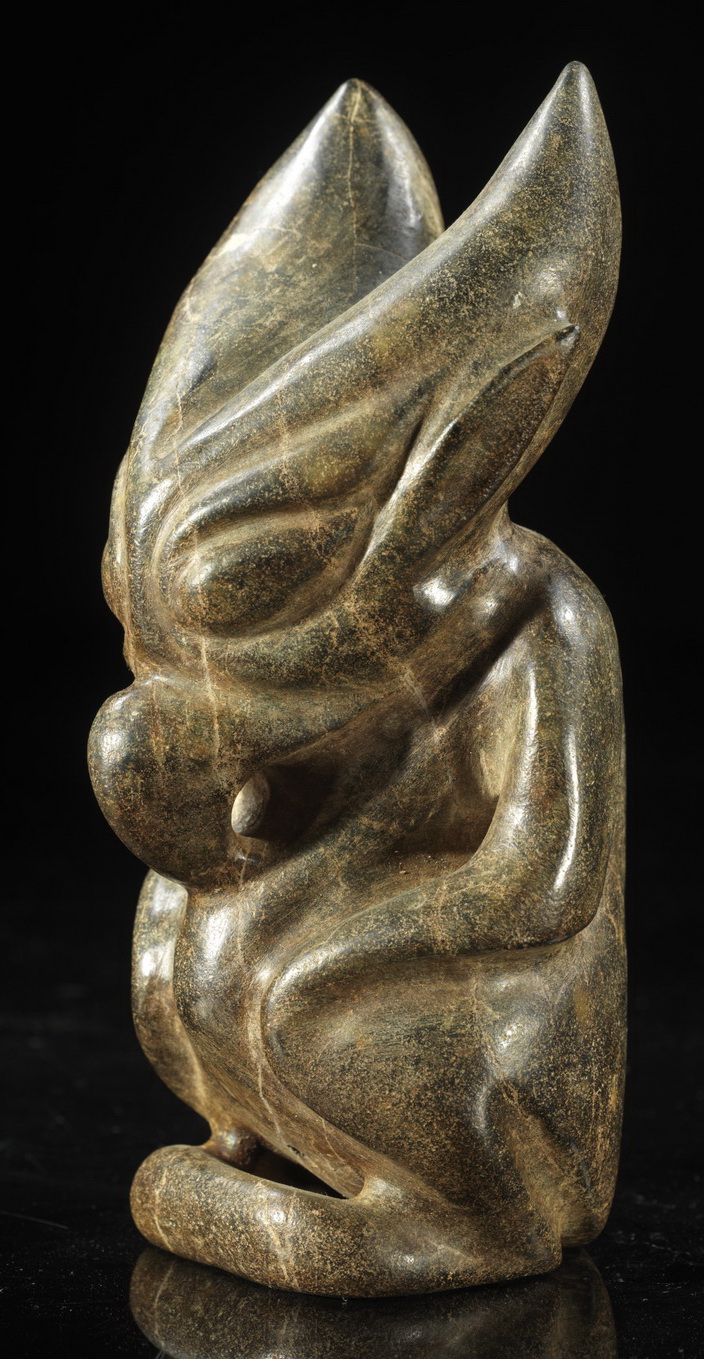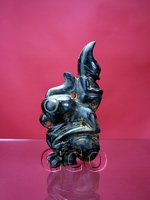The Neolithic Culture
regions was made up dominantly by three clustered centers of development:
1.
The Northern Culture:
1-1. North West: The current academic
archeological publications and the market place still classify according to the
archaeology cultures
close to the burial sites dug up bench mark archaeologists at Hongshan and
Liangchu.
As more and more Neolithic jade sculptures have been
collected by us, we have
discovered that the earliest scripts
were carved/engraved on Jade sculptures across China from XiangKiang, GangSu, to
the "Hongshan" culture as
identified at the burial sites of Inner Mongolia and LaioNing.
1-2. North East: The Northern Culture was initiated by the most primitive
art forms of Dinosaur men
and Dinosaur Birdmen in
XiangKiang. The GangSu Neolithic scripts demonstrated the transformation from
two
dimensional human carved pictures to the early carved scripts representing
individual leaders or collection
of clanship. Both the early human sculptures and the scripts identity of leaders
and clanship were shared by
the Hongshan Neolithic jade Culture of Inner Mongolia and Liaoning. The Hongshan
jade sculptures symbolic
art
forms were found to relate the earlier Xiangjiang/Gansu jade
art forms. It appears therefore, that the burial
Hongshan jades might have
originated from the Xiangjiang and the GangSu areas.
1-3. GangSu/SiChuan: The GangSu Neolithic art forms also appeared in
SiChuan's Sanxingdui culture.
2.
The Eastern Culture:
2-1. The TaiWu Neolithic cultural remains in KiangSu were found to bear records
of early scripts formation from
the time of FuShui "父"燧, TaHoi "太昊", to TaYan "太炎". More matured scripts on jade
zongs were found from
LaingChu cultural sites of ZheKiang.
2-2. The Birds totem of the "Eastern Yi"
originated from the Northern Culture of XiangKaing
and GangSu.
The Eastern Yi might have migrated south from LaioNing to Shangdong, and to
KiangSu, or from GangSu, to
Henan and to KiangSu.
The eastern Yi clan of KiangSu developed engraved scripts by freely engraving on
jade seals and varieties of
implements. Our collected Eatsern Yi jade implements seem to come from a large
settlement covering an extended
legacy of many generations of art works, as reflected by the various stages of
development of scripts forms.
The Zhejiang Liangchu jade scripts were of more matured styles scripts indicating that the Liangchu culture at
Zhejiang might belong to the later Eastern Yi culture.
3.
The Central Plains Culture:
3-1. The Northern and Eastern influences in Central Plains fully developed
Chinese scripts have been
traceable from the scripts art forms. over time.
3-2. The character scripts found on the Central plains of Shaanxi,
Shanxi, and Hennan
were well established and diversified in form. They appeared to be
more delicately structured.
We have found
inspirationally carved jade vases bearing the markings of the name Cangjie (蒼頡)
, the legendary consolidator of
the Chinese character scripts .











